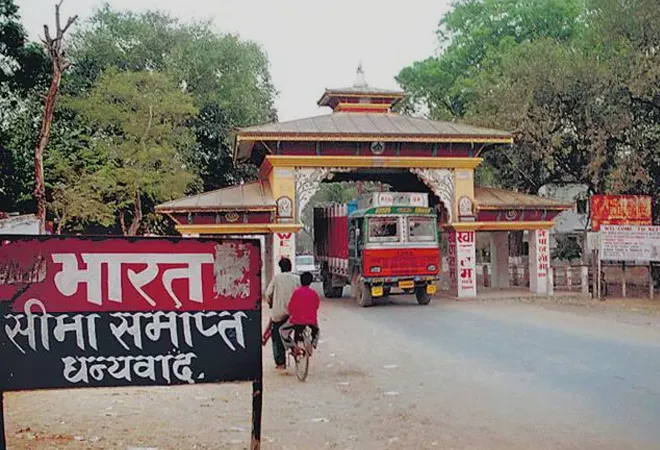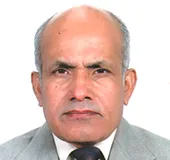
It was after much lobbying and pressure that on 21 September, the Nepalese government decided to re-open the Nepal-India border that was sealed from March 2020 to control the spread of COVID-19. Accordingly, the local authorities at the Raxaul-Birgunj border point re-opened the border on 1st October by unlocking the gates and allowing the Indian citizens, apart from the tourists, to enter into the Nepalese territory along with the vehicles with Indian number plates, at a time when the borders were closed, only those cargo trucks with Indian number plates were allowed to enter Nepal which carried essential items.
Reciprocating the decision of the Nepalese government on the issue of re-opening the Nepal-India border, the Indian government that had also closed the border in March 2020 on the same ground as that of Nepal also re-opened the border. But some Indian customs/border authorities are yet to receive the circular from the government regarding the reopening of the border because of which the movement of people and private vehicles through the customs points have not yet resumed.
To ensure the safety of the people from the COVID-19, the local border authorities have made a provision whereby both the Nepalese and Indian citizens would have to produce a COVID-19 negative report (RT-PCR, Gene Expert, True NAAT or WHO accredited test) within 72 hours while entering into Nepal through the land border.
Reciprocating the decision of the Nepalese government on the issue of re-opening the Nepal-India border, the Indian government that had also closed the border in March 2020 on the same ground as that of Nepal also re-opened the border.
Repercussions of sealed borders
Because of the closing of the Nepal-India border, the Nepalese and Indian people in general and the border inhabitants of the two countries particularly suffered a lot as they experienced immense difficulties in crossing the border. Before this, never had the 1753-kilometre long border between the two countries been closed.
Nepal and India have been maintaining an open border system since time immemorial. Citizens of one country could easily cross over the land border and reach the other side without producing legal documents like a visa, passport, or even an identity card. This is so because the 1950 Treaty of Peace and Friendship between the two countries accord national treatment to the citizens of one country in the territories of the other. Hence, each day hundreds of thousands of people from each of these countries cross over the border for religious, social, cultural, educational, health, economic, trade, and commercial purposes.
It was, therefore, natural for the people of Nepal and India to be thrilled over the reopening of the Indo-Nepal border. Reports indicate that the border inhabitants of the two countries rejoiced so much over the news that they exchanged sweets with each other.
The first batch of the Indian tourists was accorded a warm welcome by the Nepalese tourism entrepreneurs while they crossed over the border at the Raxaul-Birgung point on 1 October. Expectations are high that there would be a massive surge in the inflow of Indian tourists to Nepal.
Hari Panta, the President of the Hotel and Tourism Entrepreneurs Association in Birgunj categorically mentioned the tremendous contributions of the Indian tourists in the development of the tourism industries of Nepal. In 2019, out of the total number of foreign tourists visiting Nepal (1.17 million) through air and land routes, the Indian tourists alone numbered 209,611. It is, however, assumed that the number of Indian tourists visiting Nepal is much more than the official figure as many of their cases go unreported.
The tourism sector contributes as much as 8 percent to Nepal’s Gross Domestic Product (GDP), apart from generating direct and indirect employment opportunities for over 1.05 million people. So, the entire Nepalese economy was affected when the Indo-Nepal border was closed. Moreover, the local market centred along the border areas were also severely as it heavily relied on the cross-border movement of people. .
Since millions of Nepalese, especially from the hilly regions, are employed in India, they suffered most during the coronavirus period. Many of those people were held up in India and vice-versa after the border closure. In the chaos, there were cases of deaths after they were denied to cross the border.
To add to the misery, some chauvinists in Nepal fenced three kilometres of the border unilaterally between pillar 435/1 to 439/4 with a barbed wire closer to the “No Man’s Land” in Parsa district of Nepal with the sole intention of creating a rift in the traditional relations between the people of the two countries. Because of construction, the border inhabitants of Nepal and India who often needed to cross over the border for social, cultural, and economic reasons faced insurmountable problems.
Many people in Nepal and India chose to cross the border through the non-conventional routes which added more risks of the spread of coronavirus from one country to the other.
But now there is a growing realisation amongst the Nepalese and Indian people that the decision made by governments to seal the border was not only unrealistic but also self-defeating. Though it did contain the growth of coronavirus cases, it also aggravated the miseries of the people who often needed to cross the border for employment opportunities and also for their medical and other needs.
In distress, many people in Nepal and India chose to cross the border through the non-conventional routes which added more risks of the spread of coronavirus from one country to the other. Besides, the unauthorised trade along the Nepal-India border also surged, which ultimately resulted in the loss of government revenue. So, considering the futility of placing restrictions on the movement of people and vehicles at the Nepal-India border, it would have been appropriate if the governments of the two countries could have established joint health desks at the main border points to ascertain the cases of coronavirus, including in Raxaul-Birgung, allowing only those citizens to cross the border who tested negative.
To enhance the growing bonds of socio-economic and cultural relations between Nepal and India, it is essential to review the arrangement of the cross-border movement of private vehicles between the two countries. The Nepalese authorities at the customs points allow the Indian private vehicles to enter into Nepal for which they have to pay certain charges on a per diem basis at the border points. On the other hand, the Nepalese people are required to get prior permission from the Indian embassy in Kathmandu or its Consulate General Office in Birgunj if they have to enter India with vehicles bearing Nepali number plates. No such permission is required for the Indian people to take prior permission from the Nepalese embassy in New Delhi if they have to enter Nepal with Indian number plates. Such an anomaly in the cross-border movement of vehicles is in fact against the letter and spirit of the 1950 Peace and Friendship Treaty between Nepal and India. To maximise the gains from the reopening of the border and to strengthen the traditional bonds of friendship amongst the people, what is needed most is to allow unrestricted cross-border movement of vehicles, apart from the people, between Nepal and India.
The views expressed above belong to the author(s). ORF research and analyses now available on Telegram! Click here to access our curated content — blogs, longforms and interviews.




 PREV
PREV


